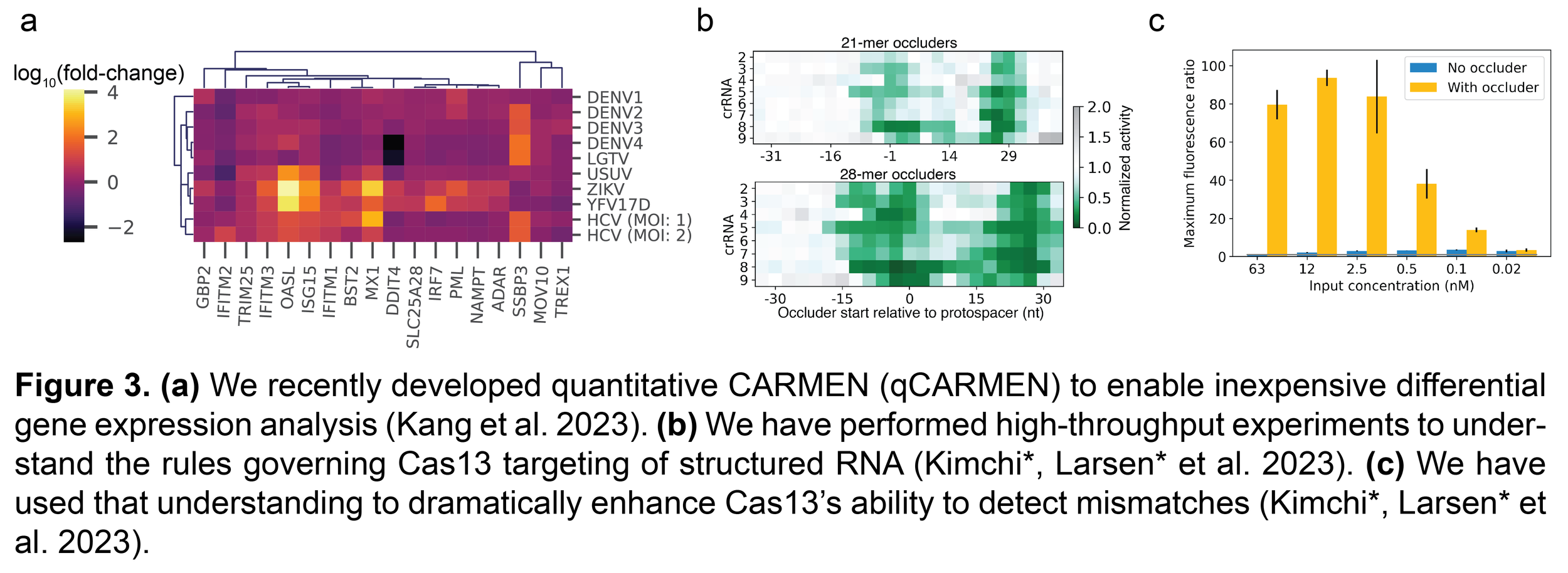Research
The Myhrvold lab develops CRISPR-based technologies for studying RNA. Our primary interest is RNAs involved in host-pathogen interactions. We use a variety of RNA viruses and other pathogens as model systems. In collaboration with others, we also apply our technologies in a diverse array of biological contexts.
Quantitative, highly multiplexed nucleic acid detection
Our goal is to quickly, cheaply, and easily quantify thousands of nucleic acid sequences in hundreds of samples simultaneously. To achieve this goal, we are building on our massively multiplexed nucleic acid detection technology CARMEN (e.g., mCARMEN, qCARMEN, bbCARMEN).
Point-of-need nucleic acid detection
We develop CRISPR-based diagnostic assays that are easier to deploy widely, allowing people to perform testing in a distributed fashion. We are inspired by the utility of rapid antigen tests during the SARS-CoV-2 pandemic.
Applying Cas13 to systematically study host-pathogen interactions
Our lab applies Cas13 to experimentally study host-pathogen interactions, using viruses such as influenza and SARS-CoV-2 as model systems. Our goal is to take a systems biology approach by simultaneously measuring the dynamics of a core set of viral and host genes involved in infection using qCARMEN, while simultaneously altering infection conditions (such as multiplicity of infection, cell type, and viral or host genotype). We will perform experiments in cell culture, organoids, and ultimately in animal models.
Cas13-based technologies to perturb and readout RNA dynamics
CRISPR-Cas9 has revolutionized our ability to study and manipulate genomic information. Developing Cas13-based technologies can revolutionize the way we study and manipulate RNA. We are developing a variety of Cas13-based technologies to perturb and readout RNA in high throughput. We work closely with colleagues in the Molecular Biology department to apply our new technologies to study diverse biological problems. Our work will advance the field of RNA biotechnology, allowing us to unlock the secrets of gene expression, regulation, and function.



